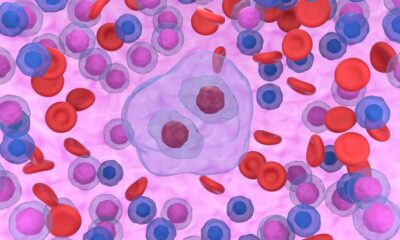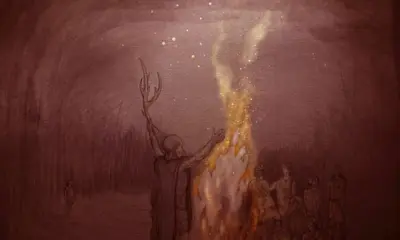Science
Neanderthals Show Distinct Butchery Techniques in Israel Caves

A recent study reveals that two groups of Neanderthals residing in the Amud and Kebara caves in northern Israel exhibited significantly different butchery techniques, despite living in close proximity and utilizing similar tools. This finding suggests the existence of local food traditions among these ancient communities.
Researchers, led by Anaëlle Jallon, a Ph.D. candidate at the Hebrew University of Jerusalem, published their findings in the journal Frontiers in Environmental Archaeology. Jallon noted, “The subtle differences in cut-mark patterns between Amud and Kebara may reflect local traditions of animal carcass processing.” The study indicates that these Neanderthals, who lived approximately 50,000 to 60,000 years ago, may have passed down distinct food preparation practices through social learning.
The two caves are located merely 70 kilometers apart, and both groups hunted similar prey, primarily gazelles and fallow deer. However, evidence suggests that the Neanderthals at Kebara hunted larger animals and transported their kills back to the cave for butchering, in contrast to their counterparts at Amud, who left behind a higher percentage of burned and fragmented bones.
At Amud, about 40% of animal bones were found burned, indicating possible cooking or accidental damage. Conversely, in Kebara, only 9% of bones showed burning, and they were less fragmented. This difference in bone condition suggests varied approaches to meat processing and consumption between the two groups.
To delve deeper into these variations, the researchers selected cut-marked bones from both sites for analysis. They examined the marks both macroscopically and microscopically, identifying unique characteristics. The density and linearity of cut-marks differed significantly; those from Amud were more densely packed and less linear than those from Kebara.
The findings raise questions about how Neanderthal communities might have approached butchery differently based on local customs. Jallon explained, “If butchery techniques varied between sites or time periods, this would imply that factors such as cultural traditions, cooking preferences, or social organization influenced even subsistence-related activities such as butchering.”
Potential explanations for the observed differences include variations in the types of prey being butchered or the organization of butchers within each group. For instance, the Neanderthals at Amud may have processed their meat differently before butchering, possibly by drying or allowing it to decompose, thus affecting the cut-mark patterns.
Conversely, differing group sizes or the number of individuals involved in the butchery process might also have influenced how meat was prepared. Nonetheless, the study acknowledges certain limitations, such as the size of the bone fragments, which may restrict a complete understanding of the butchery marks.
Jallon emphasized the need for further research to clarify these findings. “Future studies, including more experimental work and comparative analyses, will be crucial for addressing these uncertainties—and maybe one day reconstructing Neanderthals’ recipes.”
This research contributes to the growing understanding of Neanderthal culture and suggests that even in subsistence activities like butchering, distinct local traditions may have thrived.
-

 Technology5 months ago
Technology5 months agoDiscover the Top 10 Calorie Counting Apps of 2025
-

 Technology2 weeks ago
Technology2 weeks agoOpenAI to Implement Age Verification for ChatGPT by December 2025
-

 Health3 months ago
Health3 months agoBella Hadid Shares Health Update After Treatment for Lyme Disease
-

 Health3 months ago
Health3 months agoErin Bates Shares Recovery Update Following Sepsis Complications
-

 Health3 months ago
Health3 months agoAnalysts Project Stronger Growth for Apple’s iPhone 17 Lineup
-

 Technology5 months ago
Technology5 months agoDiscover How to Reverse Image Search Using ChatGPT Effortlessly
-

 Technology3 months ago
Technology3 months agoElectric Moto Influencer Surronster Arrested in Tijuana
-

 Technology2 months ago
Technology2 months agoDiscover 2025’s Top GPUs for Exceptional 4K Gaming Performance
-

 Technology5 months ago
Technology5 months agoMeta Initiates $60B AI Data Center Expansion, Starting in Ohio
-

 Technology5 months ago
Technology5 months agoRecovering a Suspended TikTok Account: A Step-by-Step Guide
-

 Health5 months ago
Health5 months agoTested: Rab Firewall Mountain Jacket Survives Harsh Conditions
-

 Lifestyle5 months ago
Lifestyle5 months agoBelton Family Reunites After Daughter Survives Hill Country Floods





















